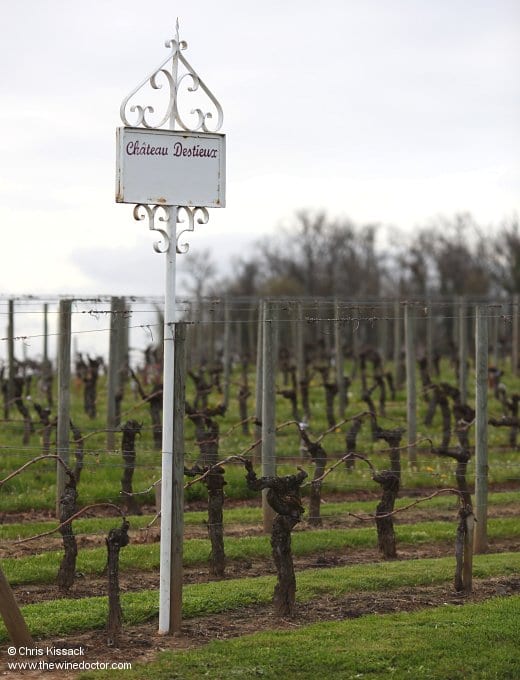Château Destieux
The vineyards perched on the limestone plateau to the east of the town of St Emilion provide rich pickings for drinkers prepared to look beyond the most famous names of Bordeaux. And you don’t have to look as far as Castillon to find both value and quality combined. The communes of St Hippolyte, and then further to the east St Etienne de Lisse, both eligible for the St Emilion appellation, should not be overlooked.
In each case the vineyards of these two communes run from the cold limestone plateau over the slopes of limestone and clay, and down onto the sandy and gravelly soils beyond. There are some notable names here, especially in St Etienne de Lisse where we find the latest incarnation of Château Valandraud, as well as Château Faugères, Château Fleur Cardinale and Château de Pressac, all up on the plateau. The smaller commune of St Hippolyte does not boast such a lengthy roll-call of names, perhaps because there is much less limestone plateau here, and much more sandy plain. One or two estates are certainly worthy of our attention though, in particular Château Destieux.
History
The origin of the estate, and the origin of its name, seem to be uncertain. Some have claimed the name destieux is derived from les yeux (meaning eyes), a reflection of the excellent view across the valley of the Dordogne afforded by its commanding position atop the plateau. While I might buy into such a story with the likes of Château Bellevue-Mondotte, which did indeed once enjoy a belle vue across the valley, I am not at all convinced by les yeux and destieux. I think it more likely that the estate was named for a long-forgotten proprietor.

